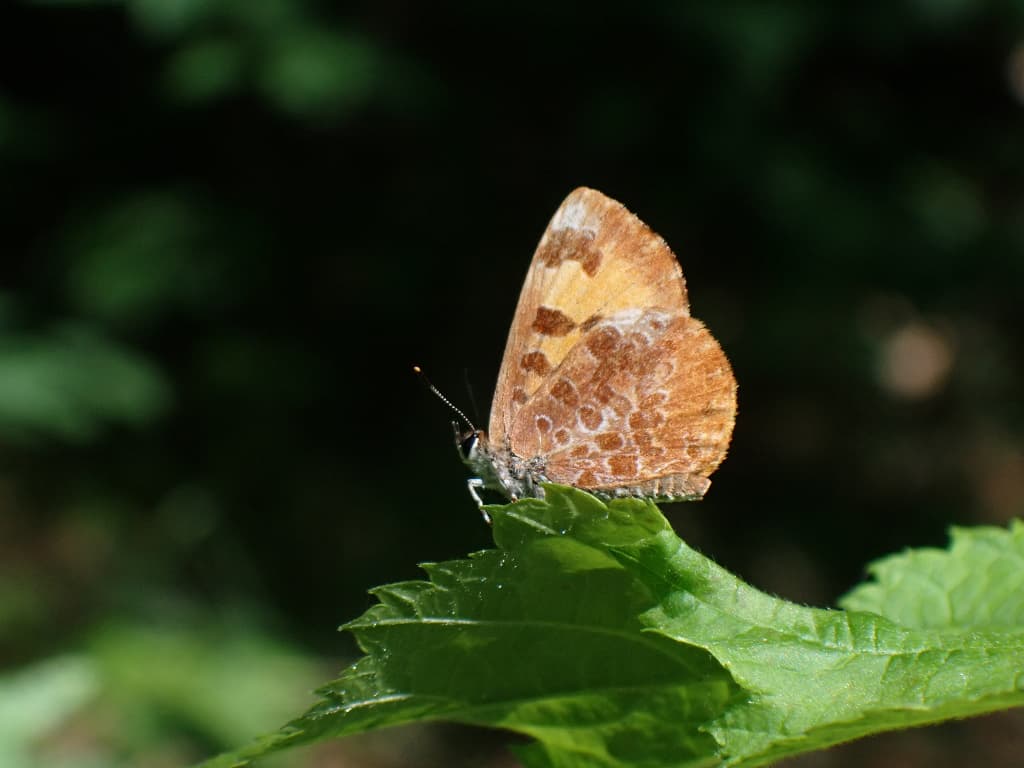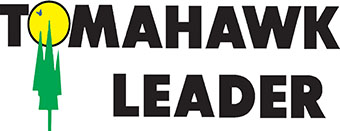By Emily Stone
Naturalist/Education Director, Cable Natural History Museum
“Oh wow! No way!”
Exclamations like this, spoken with absolute, unbridled enthusiasm, have become the soundtrack of my summer.
In this case, Cade Campbell, one of our two Summer Naturalist Interns, was delighting over a small, rusty, spotted butterfly. Perched on the leaf of a chest-high shrub in the dappled sunlight of the deep forest, it looked to me like many of the other small, rusty, spotted butterflies that Cade had been exclaiming about all day as we explored a prairie, a fen, and now this. Of course, I’m not complaining.
My typical, nearsighted M.O. is to see something interesting, try to zoom in with my camera, get it in focus before it flies away, and then identify it later when I can zoom in even farther on the detail. Cade’s younger eyes and knack for taxonomy mean that he’s able to put a name on butterflies, dragonflies, grasshoppers, and more, right there in the field.
Is he right 100% of the time? I’m often not in a position to argue, but almost every time, my squinting, computer-aided IDs have matched with his.
“It’s a Harvester,” replied Cade when I asked him to explain his excitement. “They are carnivorous. Have you heard of them?”
I had heard of a carnivorous butterfly, or rather blood-drinking moths. Vampire moths include several members of the same genus that belong to a larger group of moths who feed on fruit. They use their barbed proboscis to pierce tough skin and lap up sweet juices. Sugar from fruit isn’t a complete diet, and males need to acquire sodium and nitrogen to give to their love interest as a nuptial gift. The females then use the nutrients to lay eggs.
Many butterflies and moths engage in a behavior called “puddling,” which occurs not just on the edges of puddles where salts are concentrated, but also on animal scat, rotting plants, and dead animals. Vampire moths learned that they could use their barbed tongue to puncture the skin of an animal, lap up the blood, and get necessary nutrients that way. Unlike mosquitoes, it’s just the males who drink blood. While they occasionally feed on humans, they don’t seem to be dangerous. Thankfully, vampire moths are not native to North America.
“Their caterpillars eat woolly alder aphids,” explained Cade, as we both crept closer to the Harvester butterfly with our cameras ready. “And the adults sip on the aphids’ honeydew.”
I felt a little twinge of dismay. Woolly alder aphids are one of my favorite creatures! In the fall they float around like little fairies covered in wispy strands of white wax. I’ve written about them before. Just like most aphids, woolly alder aphids suck plant juices from a host. The alder shrub harvests sunlight, water, and air; the aphids harvest the alder’s sap; and then ants (and, I just learned, Harvester butterfly adults) feed on sugary honeydew secreted by the aphids. In return, ants provide the aphids some protection from predators…predators like the Harvester butterfly’s caterpillars.

Except that the caterpillars somehow manage to avoid detection by the ants, and thus avoid eviction from the aphid colony. Wax from the aphids clings to the caterpillars’ hairs, providing them with camouflage. The caterpillars may also weave themselves a silk blanket and decorate it with the dead bodies of aphids—more camouflage.
Ants aren’t visual creatures, though. Their communication is chemical. So, the caterpillars endeavor to have a similar chemical composition and therefore smell like aphids. The caterpillars may even scrape against a leaf to mimic the sounds of aphids eating. With all of these tricks, the caterpillars are able to live among (and feed on) the aphids undetected by the ants.
As the Harvester caterpillars munch on a rich diet of tasty aphids, they grow incredibly quickly. Monarch caterpillars, feeding on the tough, toxic leaves of milkweed, take up to 17 days to reach full size. Harvesters make in 8. Then they spend the winter in their chrysalis, never straying too far from an alder swamp that houses their buffet.
Something lured Cade deeper into the forest as I finished snapping photos of this particular rusty-colored butterfly. From somewhere in the sun-dappled forest emerged the familiar cry of “Oh wow! No way!”
Nature, it seems, is just full of surprises and delights—if you know how to see them.
Emily’s award-winning second book, Natural Connections: Dreaming of an Elfin Skimmer, is now available to purchase at www.cablemuseum.org/books and at your local independent bookstore, too.
For more than 50 years, the Cable Natural History Museum has served to connect you to the Northwoods. The Museum is now open with our exciting Growing Up WILD exhibit. Follow us on Facebook, Instagram, YouTube, and cablemuseum.org to see what we are up to.
